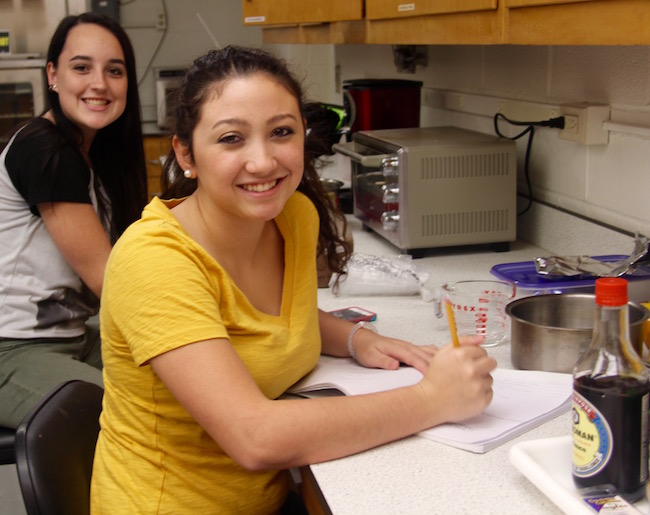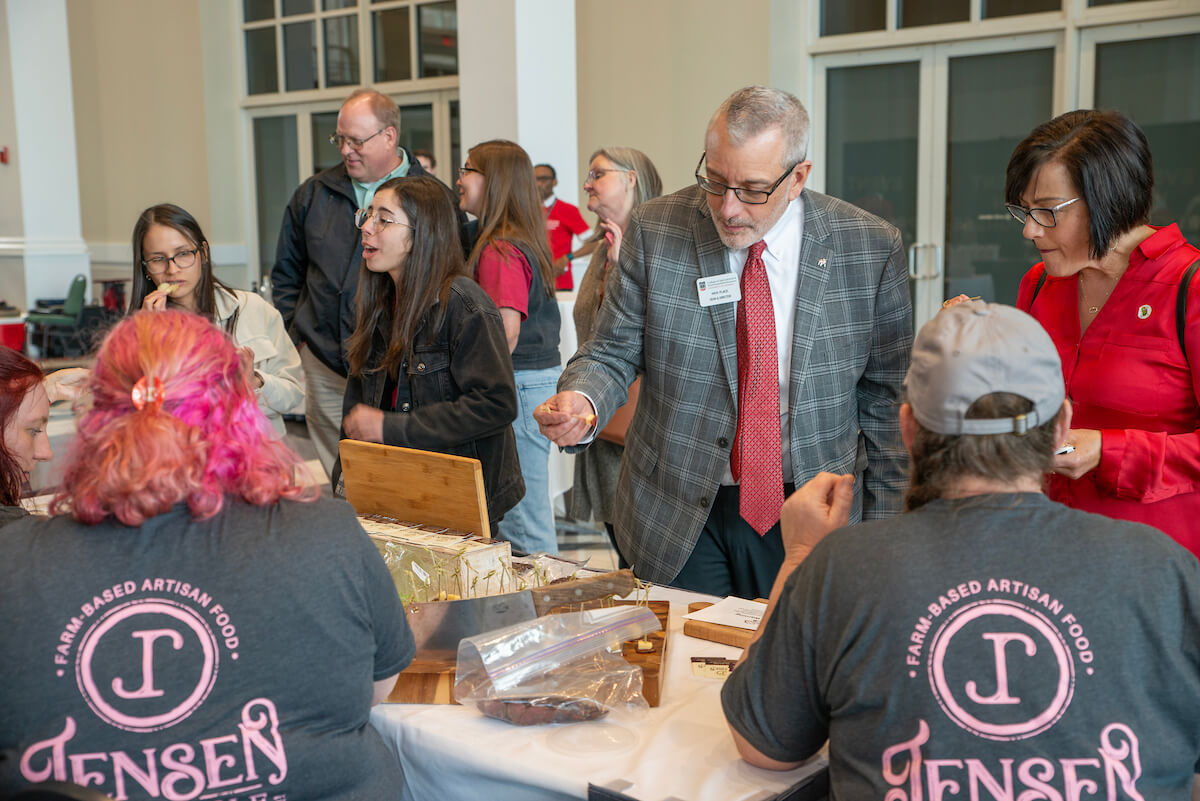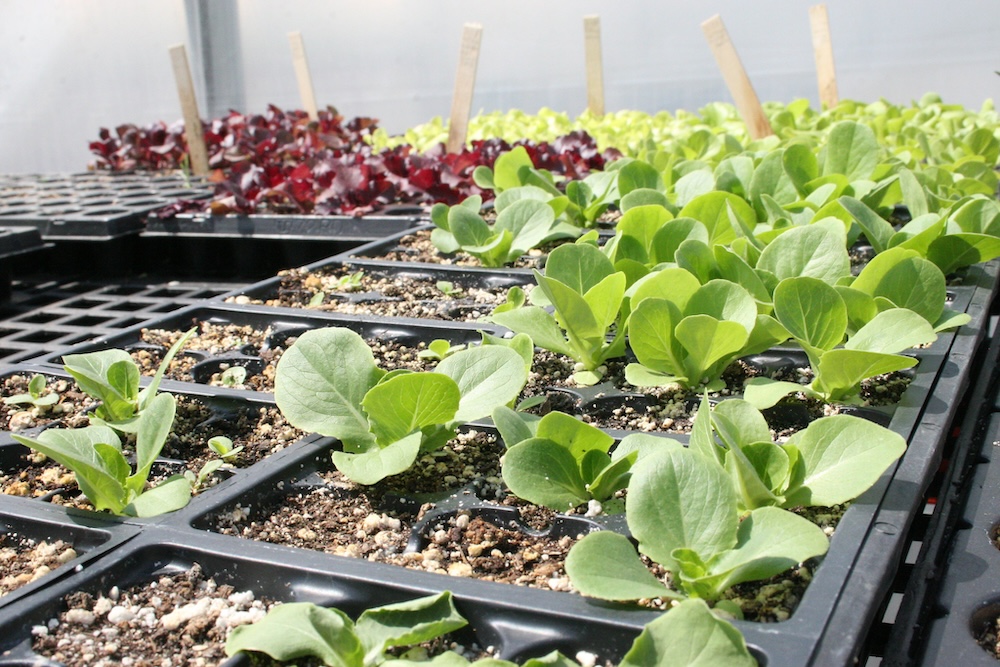“The beauty and the flexibility of the academy is that we have a lot of standards, but we can pick and choose the ones that fit with science and math, and then add in the technology and the engineering through agriculture,” said Greg Waits, the program’s coordinator and the agriculture education teacher at the high school.
Students are selected for the program based on their test scores in math and science. Then they take advanced classes in STEM areas during their freshman, sophomore and junior years before participating in the off-campus experience at UGA Griffin. These classes include gifted/honors geometry, biology, advanced algebra, chemistry, precalculus and gifted/honors horticulture, gifted/honors agriculture and gifted/honors landscape architecture.
The program’s courses are challenging to say the least, according to Waits. “I have two 11th-graders now who are in band. Unfortunately, they had to make a choice and we lost one to band commitments,” he said. “And we’ve lost students from the academy because they couldn’t keep up (with the coursework) because the rigor was just too much.”
After completing the STEM Academy courses, the students are prepared for the internship at UGA Griffin. The students come to the UGA Griffin campus three days a week for three hours per day.
This year’s students, the first to take part in the off-campus internship, are Courtney Bagwell, Dylan Blohm, Abigail Chasteen, Nikki Dodson, Megan Pitts, Taylor Thomas and Talisa Watts.
Blohm is doing undergraduate research-level work in UGA Griffin plant pathologist James Buck’s laboratory. “We’ve taught him how to culture fungi, which is a fundamental skill in the field of plant pathology,” Buck said. “Then we teach him why this is necessary in our search to control plant diseases. He’s a very bright student and next he will be working with DNA from the fungus.”
Pike County High School Assistant Principal James Stanford says Blohm has “learned more lab skills in a few weeks in Dr. Buck’s lab than he could have in three years of high school classes.”
“This isn’t human disease, but I think it will definitely be useful to me in the future,” said Blohm who hopes to someday become a medical doctor. “You could never do something this intense in high school, plus I’m here nine hours a week.”
Across campus in the UGA Griffin food science department, students Pitts and Watts are creating recipes and baking cookies. Sounds like fun, and it is, but there’s much more to the process.
“I want them to learn more about the field of food science and why it’s needed,” said UGA Griffin sensory scientist Koushik Adhikari. “They have learned how to grind fresh peanut butter and I have been giving them college sophomore-level material to read. They are both very bright students and I know they will do great in college.”
The students have learned about the abundance of flavor choices available on the market and how a product’s texture can determine whether consumers accept it or not.
“We are creating different textures of cookies using several different sweeteners and six different flavors,” Pitts said. A consumer panel led by Adhikari will test the students’ cookie creations.
Down the hallway in Food Product Innovation and Commercialization Center (FoodPIC) Director Kirk Kealey’s laboratory, students Bagwell and Dodson are busy trying to tweak a gourmet chocolate milk recipe for a FoodPIC client. “We need to know how to make 40 gallons of chocolate milk from this 2-cup recipe,” Bagwell said. “I still can’t believe we get so much freedom to do so much hands-on work.”
Students Chasteen and Thomas’ projects combine the fields of food science and horticulture. Working with UGA Griffin peach breeder Dario Chavez and postdoctoral associate Rachel Itle, the students are learning to break down the 50 to 70 compounds found in fresh peaches and blueberries.
“This will give them an overview of food quality measurements,” Itle said. “They are learning about all the things used to evaluate fruit quality, from color and acid level to antioxidants. I didn’t get this kind of experience until I was in college.”
Thomas now knows that the peaches in peach stands and grocery produce shelves are not all alike. “I understand now why there are different peach varieties from week to week in the grocery store. Farmers have to grow peaches that are ready to pick at different times so there are peaches in the stores all summer long,” said Thomas, who plans to major in environmental science in college.
This isn’t Thomas’ first experience on the UGA Griffin Campus. She was selected for the Young Scholars summer internship program for the past two years.
“STEM education encourages a curriculum that is driven by problem-solving, discovery, exploratory learning and student-centered development of ideas and solutions,” said Stanford. “The academy isn’t just for students pursuing careers in agriculture, but for students wishing to engage in a rigorous course of study in science, technology, engineering and mathematics.”
When planning the STEM Academy, connecting with UGA Griffin came naturally for Waits, who is no stranger to the campus. He worked there as a research technician before returning to college to earn a teaching certificate.
“I worked for Dr. Bob Jarret in the USDA (U.S. Department of Agriculture) and grew peppers, watermelons, squash, okra and eggplant. Then I harvested and collected data and seeds for the USDA seed bank,” said Waits, who holds an undergraduate degree in botany.
UGA Griffin Campus Director and Assistant Provost Lew Hunnicutt is excited to see the Pike County STEM Academy students on campus.
“The programs that UGA Griffin offers to high school students give them access to world-renowned scientists and research, and expose them to educational opportunities at UGA and beyond,” Hunnicutt said. “It is not every community that has this type of experience to offer to students, so we are proud to partner with area schools, organizations and others to offer these programs that can definitely help students when determining future fields of study.”
For more about academic programs on the UGA Griffin Campus, visit www.griffin.uga.edu.



